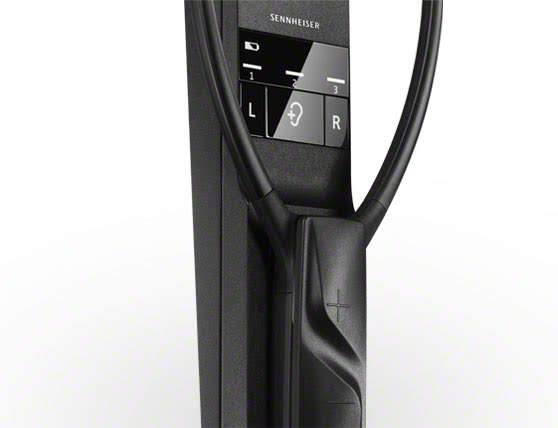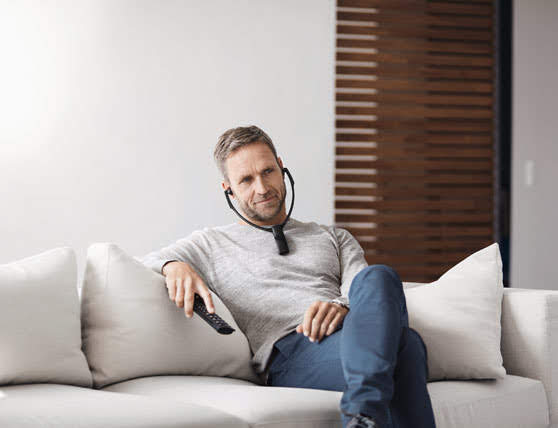I can't hear the TV, do I need hearing aids?
As I have said before, quite often I come across people in the clinic with issues like hearing the TV. In fact the issue and the complaining of their loved one's is the main reason why they have arrived in my clinic. A typical comment is I have to turn the TV up but everyone complains it is too loud. Sometimes, even when I turn the volume up it is still not clear. I discussed this earlier this year in Can't Hear The TV? You May Not Need Hearing Aids. I have come across a new solution for hearing the TV that I want to discuss.
Very Little Hearing Loss
When I test their ability to hear though what I find is a mild high frequency hearing loss. I am beginning to see this type of loss in the clinic more and more. It is representative of the growing awareness of hearing and hearing health care within the general population.
The situation is simple, the hearing loss is not something that we would treat with hearing aids. It is simply too mild but I don't feel comfortable sending someone away that has a problem. I have always thought that I should at least try to help with the issue.
With that in mind, I have been doing some research on different solutions to help people with specific lifestyle problems caused by a hearing loss that we wouldn't consider hearing aids for. In this the first of this type of article, I want to talk to you about wireless TV headphones from Sennheiser.
A Solution To Hear The TV Clearly
Sennheiser
RS 5000 Digital Wireless TV Headphones
The RS 5000 system consists of a base station transmitter which is also a charger unit for the headset. The base station connects to your TV and the wireless headset receiver sits onto it to charge. It is a particularly smart piece of kit that Sennheiser have designed to help people who have difficulty hearing the TV clearly.
In fact the unit uses a new TV Speech Intelligibility feature to deliver better clarity for people with mild hearing loss. The feature works by making speech easier to understand. They have designed it to dynamically reduce background noise which is part of the TV audio but may interfere with the spoken word.

What's in the box:
- Headphone with built-in Li-Pol rechargeable battery
- Docking station
- 1 pair of ear pads for small ears
- Power supply unit with country adapters for EU, UK, US and AUS TV
- Connection cable for 3,5mm headphone audio out
- TV Optical cable for digital audio out
- Instruction manual
Setting it up
The set up is pretty easy, plug the base station into a wall socket and connect your TV to it. You have a choice of connections included and it will connect with both digital and analog TV outputs. I used both the analog connection with the included 3.5mm cable and the digital audio connection. Both connections delivered outstanding audio quality.

The headset
The headset allows you to hear the transmitted audio within a range of up to 70 m. We tested it out walking around the house and got no audio drop out. It will also deliver up to 12 hours of playing time. Which we imagine would be enough to please even the heaviest TV addict.
The headset is ultralight. Because of the way you wear it, it puts no pressure on your ears or temples even during long sessions. it has an auto off function and when not in use, it just switches itself off. You can also adjust the volume of sound on the headset and change your hearing profiles.
3 hearing profiles and balancing the sound
The device offers three hearing profiles to choose from, which deliver clearest speech and a great music. You can also adjust the left and right volume separately for a pleasant and balanced sound. I think this is a great feature for someone who has an asymetrical hearing loss.
Our Experience on Test
So first of all, it was easy to set up and I had it up and running in a couple of minutes. The headset is really interesting, when I put it on first I thought that the lack of pressure against my ears would mean lousy sound. So the fantastic sound surprised me.
It is light and comfortable and I wore it for hours without any issues. There are actually four sound profiles, the first is just the audio reproduced as is. The three hearing profiles are really interesting though.
Hearing profile one
This profile boosts low frequency sounds and takes the edge slightly off high frequencies. It is a lovely warm sound with a bit of bass oomph that is ideal for listening to music.
Hearing Profile two
This profile boosts high frequencies quite strongly. It does provide exceptional clarity delivering clear sibilants and consonants in speech sounds. It also makes high frequency tones such as bird calls clear. This is a pretty good profile for people with mild high frequency hearing loss.
Hearing profile three
This profile is really interetsing for me, it lowers low frequency sounds. This reduces the chance of low frequency sounds masking the high frequencies. This allows high frequencies to be clear
I used the three hearing profiles and was more than happy that they did exactly what they said. I listened to some music with them without any of the hearing profiles and was impressed at the sound. Hearing profile one really delivered a nice music experience. the bass was great while the treble sounds remained clear.
The two hearing profiles also delivered. I used hearing profile one during a couple of TV programmes that were primarily speech based. It ensured that speech was crisp and clear even when heavily accented.I used both hearing profile two and three during a couple of films and TV shows. To be honest I was happy with both. But, I could see where hearing profile three lowered the background sound allowing speech to be clearer. It did so without making the sound un-natural in anyway which was also great.
Good for people with mild hearing loss
I think these are great devices for people with mild hearing loss looking for a solution for the TV. You can listen to your TV programmes at your own volume without interfering with anyone else. They will also make that sound a little clearer for you. On top of that, the price isn't overwhelming. At under 300 quid (can be bought for $250 in the US) they are a financially manageable solution to your main problem.
The only downside I found with them is that they cut you off from the people around you somewhat. Although I was thinking about that and it actually may be a good thing. By that I mean that if they want to speak to you they have to get your attention. That might not be a bad thing, because if they have your attention, there is a better chance of you hearing what they say clearly. In finishing, this is definitely a device I will discuss with people who have mild hearing loss and problems with the TV.
I have discussed solutions like this before, a really interesting one that we have yet to try is the new concept in earphones from Bose that we discussed in Bose Hearphones, Hearing Aids?



